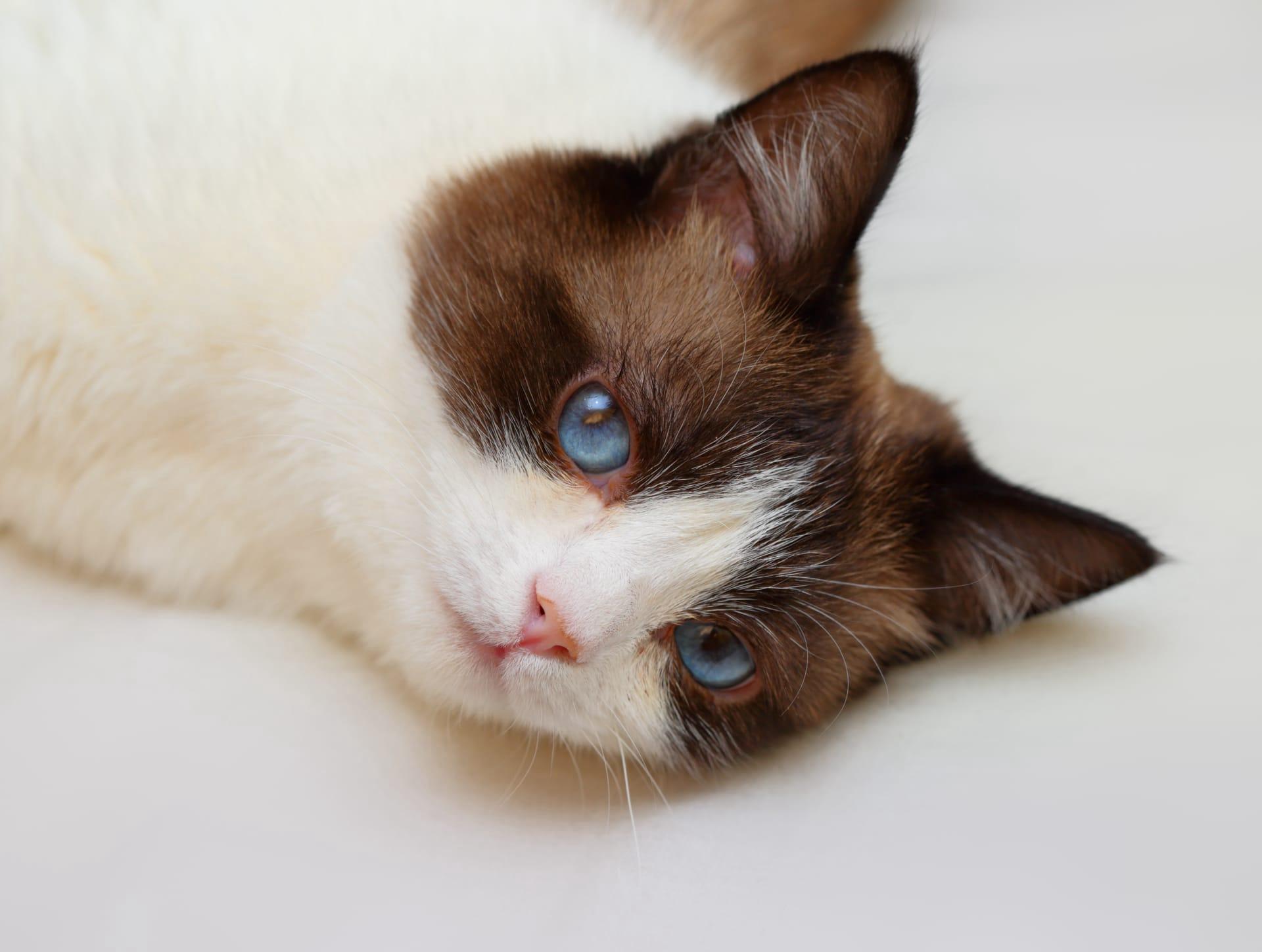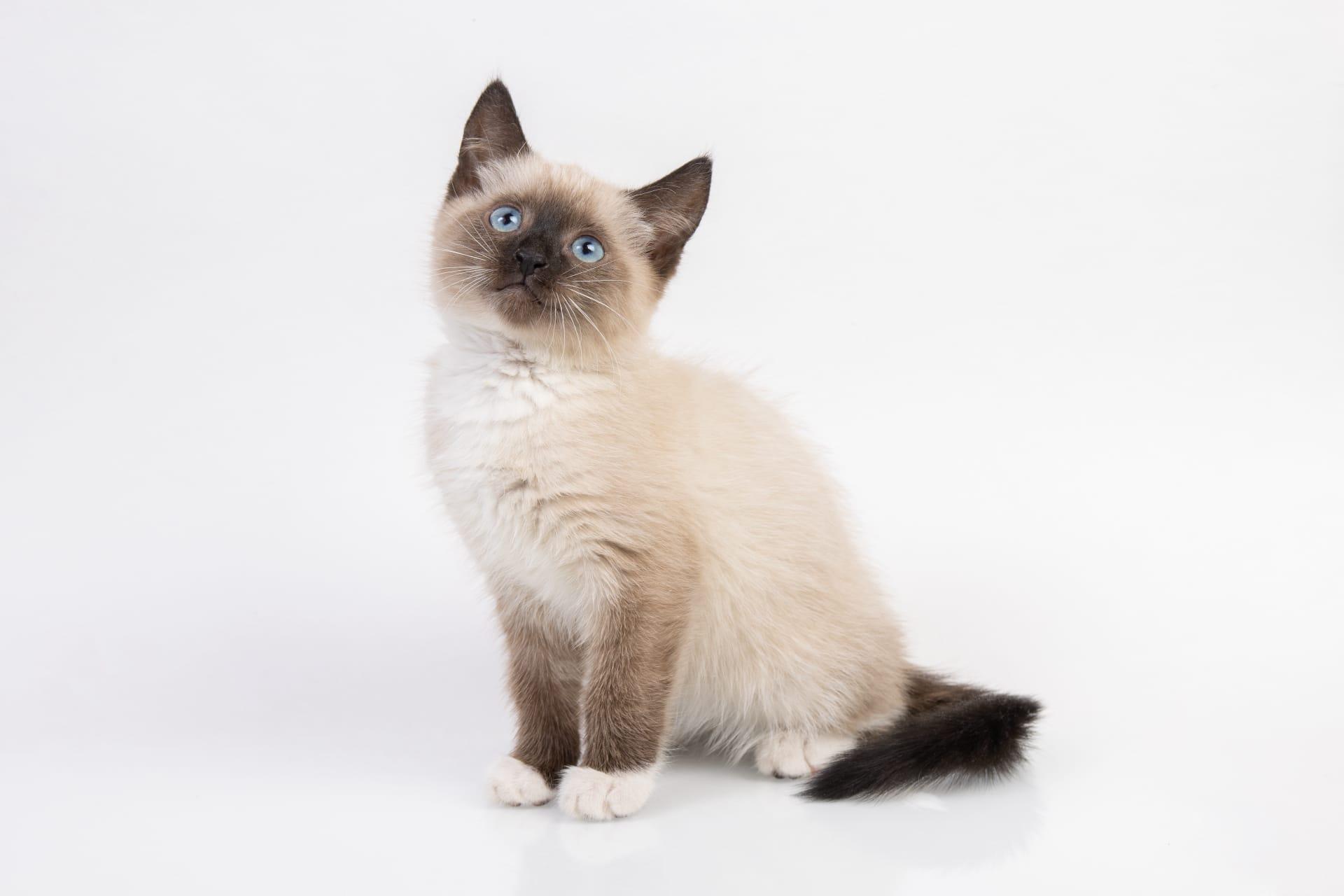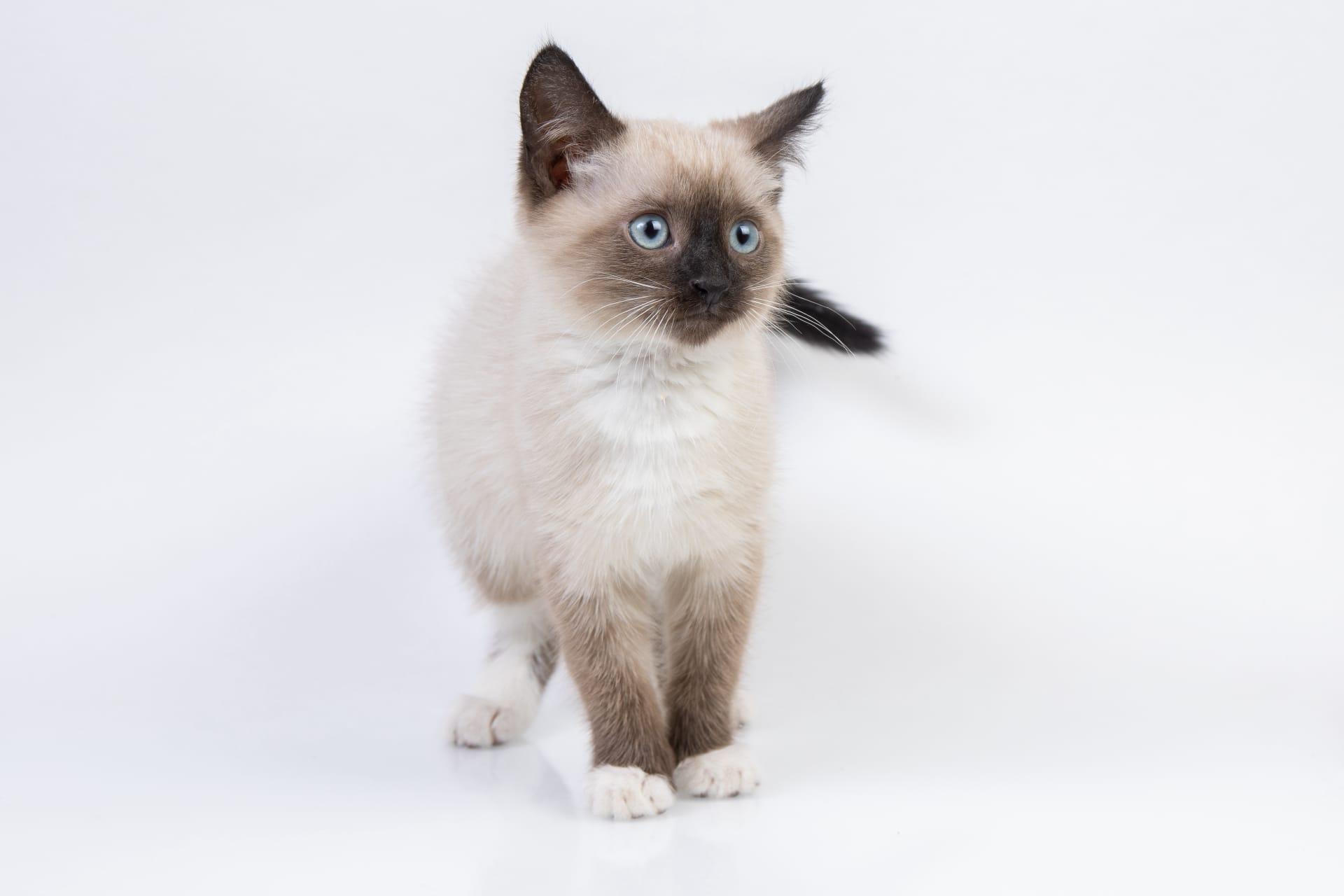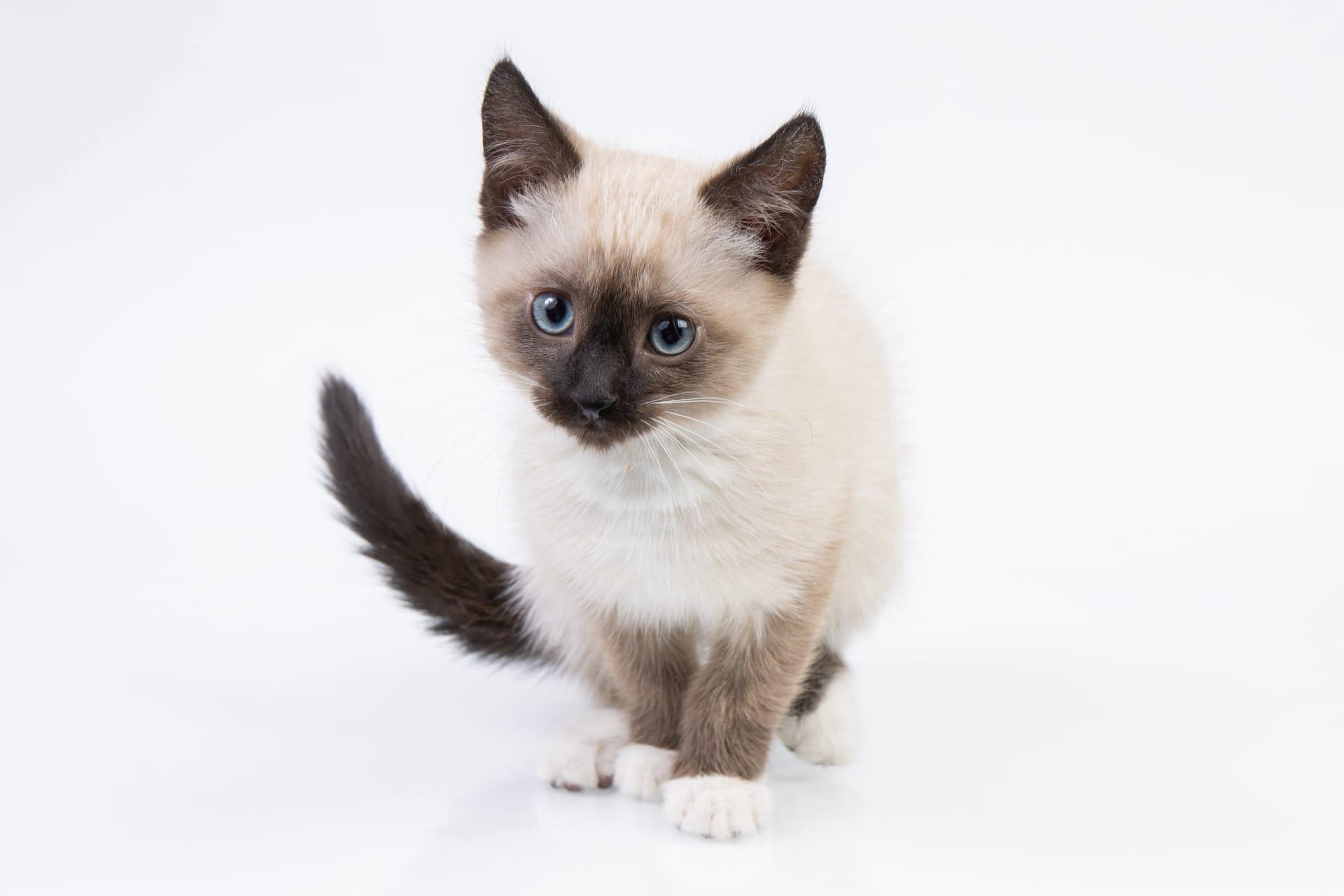Snowshoe Cat Trivia
- Home /
- Trivia Question /
- Animal /
- Snowshoe Cat Trivia
1
Question: What is the origin and history of the Snowshoe Cat?
Answer: The Snowshoe Cat breed originated in the United States during the 1960s. It was developed by crossing Siamese cats with American Shorthairs, which resulted in a breed with the Siamese point coloration and striking blue eyes, combined with white 'boots' or 'snowshoes'. This unique combination was first noticed by a Philadelphia breeder named Dorothy Hinds-Daugherty, who decided to develop a breed that showcased these distinctive features. Due to the breed's specific genetic makeup, Snowshoe kittens can vary greatly in appearance, even within the same litter, making each cat uniquely patterned.
Question: What are the distinctive physical characteristics of Snowshoe Cats?
Answer: Snowshoe Cats are medium-sized with a strong, muscular build, weighing between 9 to 12 pounds. They have a short coat that is soft and easy to care for, showcasing a striking contrast between their light-colored body and darker extremities, known as points. Their coat color ranges from fawn to chocolate, with the points being significantly darker, and they possess white markings on their face, chest, and feet which resemble snowshoes. The most captivating feature of Snowshoe Cats is their deep blue almond-shaped eyes, which are large and expressive. Their ears are medium-sized and slightly rounded at the tips, complementing their overall elegant appearance.

2
Question: Is it true that Snowshoe Cats require a lot of maintenance due to their coat?
Answer: Contrary to what some might believe, Snowshoe Cats actually have low maintenance coats. Their short, smooth fur does not mat or tangle easily, which means they require minimal grooming. A weekly brushing is typically sufficient to remove loose hair and maintain their coat's shine. This breed sheds moderately, less than many other cat breeds, making them a somewhat hypoallergenic option for pet owners.
Question: Do Snowshoe Cats always have blue eyes?
Answer: While the breed standard for Snowshoe Cats specifies deep blue eyes, the intensity of the blue can vary from cat to cat. However, it's a misconception that all Snowshoes will have the same shade of blue in their eyes. Genetics play a significant role in the coloration of their eyes, and while they are known for their striking blue eyes, variations in hue are common. The blue eye color is a hallmark of the breed, inherited from their Siamese ancestors, and is one of their most enchanting traits.

3
Question: How do Snowshoe Cats behave around people and other pets?
Answer: Snowshoe Cats are known for their friendly and affectionate nature. They are sociable creatures that thrive on interaction with humans and are known to form strong bonds with their owners. Snowshoes are also typically good with children and other pets, including dogs, making them excellent family pets. They possess a playful and curious disposition, often showing a kitten-like demeanor well into adulthood. Their vocalizations are softer and less frequent than those of their Siamese ancestors, but they will communicate their needs and desires in a gentle manner.
Question: What is the lifespan and health of a Snowshoe Cat?
Answer: Snowshoe Cats are generally healthy and robust, with a lifespan ranging from 14 to 19 years. Like all breeds, they can be predisposed to certain health issues, but with proper care, regular veterinary check-ups, and a healthy diet, Snowshoes can lead long and healthy lives. Potential health concerns include common feline conditions such as heart disease, kidney issues, and obesity if not managed with a proper diet and regular exercise. However, the breed does not have a high incidence of serious genetic disorders, making them a relatively healthy breed overall.

4
Question: Can Snowshoe Cats adapt to living in an apartment?
Answer: Snowshoe Cats are quite adaptable and can thrive in various living situations, including apartments. Their moderate level of activity and affectionate nature make them well-suited to indoor living. Providing ample playtime, interaction, and enrichment activities, such as toys and scratching posts, can ensure they remain happy and healthy in an apartment setting. Snowshoes enjoy perching on windowsills to observe the outside world, so creating a stimulating environment is key to their well-being in smaller spaces.
Question: Are Snowshoe Cats rare, and why?
Answer: Yes, Snowshoe Cats are considered a rare breed. Their unique combination of physical traits, such as the specific point coloration and white markings, is the result of a recessive gene, making it a challenge to consistently produce cats that meet the breed standard. Additionally, the breed began with a small gene pool, and despite its growing popularity, the number of breeders remains relatively limited. This rarity adds to their allure but also means that potential owners may face challenges finding available kittens and may encounter waiting lists.

5
Question: What makes Snowshoe Cats particularly good companions?
Answer: Snowshoe Cats are cherished for their sociable and affectionate demeanor, making them exceptional companions. They are known to be highly interactive with their owners, seeking attention and affection regularly. Their intelligence and playful nature mean they are easily trained to perform tricks, use a scratching post, and even participate in games like fetch. Snowshoes' balanced temperament allows them to be both active playmates and calm cuddle buddies, adapting to the mood of their human companions.
Question: How does the personality of Snowshoe Cats differ from other breeds?
Answer: Snowshoe Cats strike a unique balance between the playful, energetic nature of Siamese cats and the laid-back, affectionate characteristics of American Shorthairs. This blend of traits results in a cat that is both engaging and easygoing. They are less vocal than Siamese cats but more communicative and affectionate than many other breeds. Their friendly nature extends to strangers and other animals, making them less prone to anxiety or aggression. This adaptable and sociable personality sets them apart as an ideal breed for families, singles, and seniors alike, looking for a companionable and moderately active pet.